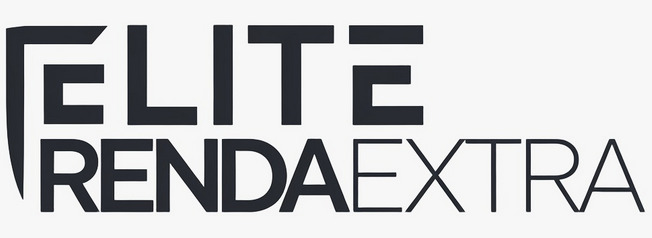Navigating the world of personal loans can feel overwhelming, especially when you’re trying to secure the most favourable terms. With a multitude of lenders, from major banks to innovative online platforms, the Canadian market is competitive. Finding the right loan isn’t just about getting approved; it’s about finding a rate and term that fits your financial situation without causing undue stress down the line.
This guide is designed to demystify the process. We’ll break down what influences personal loan rates, compare some of the top lenders across Canada, and provide a clear, step-by-step strategy to help you find and secure the best possible offer for your needs. Whether you’re consolidating debt, financing a large purchase, or covering an unexpected expense, understanding your options is the first step toward making a smart financial decision.
Understanding How Personal Loan Rates Work in Canada
Before you start comparing lenders, it’s crucial to understand the mechanics behind the numbers. The interest rate you’re offered is a direct reflection of the lender’s perceived risk in loaning you money. Several key factors come into play, and knowing them can empower you to improve your chances of getting a lower rate.
Key Factors That Influence Your Interest Rate
- Credit Score: This is arguably the most significant factor. A higher credit score (typically 660 and above in Canada) signals to lenders that you are a reliable borrower with a history of paying debts on time. This lower risk often translates into a lower interest rate.
- Income and Employment Stability: Lenders need assurance that you have a steady source of income to make your monthly payments. A stable employment history and a sufficient income can lead to a better loan offer.
- Debt-to-Income (DTI) Ratio: This ratio compares your total monthly debt payments to your gross monthly income. A lower DTI ratio indicates that you have enough disposable income to handle a new loan payment, making you a more attractive candidate for lenders.
- Loan Amount and Term: The size and length of your loan can also affect your rate. Sometimes, shorter loan terms may come with lower interest rates but higher monthly payments. Conversely, longer terms mean lower monthly payments but potentially more interest paid over the life of the loan.
Fixed vs. Variable Rates: What’s the Difference?
When you take out a personal loan in Canada, you’ll typically choose between two types of interest rates:
- Fixed Rate: Your interest rate is locked in for the entire loan term. This means your monthly payment will never change, making it easy to budget. It provides stability and predictability, which is ideal for those who prefer a consistent payment schedule.
- Variable Rate: This rate is tied to the lender’s prime rate, which can fluctuate with changes in the Bank of Canada’s policy interest rate. If the prime rate goes up, your interest rate and payment may increase. If it goes down, you could save money. This option carries more risk but can offer a lower starting rate.
Comparing Top Personal Loan Lenders in Canada
The Canadian lending landscape includes traditional big banks, credit unions, and a growing number of online fintech lenders. Each has its own set of pros and cons. Banks may offer a sense of security and established relationships, while online lenders often provide faster approval and more competitive rates for a wider range of credit profiles.
Below is a comparative look at some popular options. Note: The APR ranges are estimates for illustrative purposes and can change based on market conditions and your individual financial profile.
| Lender | Estimated APR Range | Loan Amounts | Best For |
|---|---|---|---|
| Major Banks (RBC, TD, Scotiabank) | 6% – 14% | $5,000 – $50,000+ | Borrowers with good to excellent credit who prefer an established institution. |
| Loans Canada | 6.99% – 46.96% | $500 – $50,000 | A comparison platform to see offers from multiple lenders at once, suitable for various credit scores. |
| Borrowell | 5.6% – 31.4% | $1,000 – $35,000 | Online pre-qualification with no impact on your credit score; good for shopping around. |
| Fairstone | 19.99% – 39.99% (Unsecured) | $500 – $25,000 | Borrowers with fair to good credit who may not qualify at a traditional bank. |
How to Secure the Best Personal Loan Rate: A Step-by-Step Guide
Finding the lowest rate requires a bit of homework. Following these steps will help you approach the process strategically and increase your chances of success.
Step 1: Check Your Credit Score
Your journey begins with knowing where you stand. You are entitled to a free copy of your credit report annually from Canada’s two main credit bureaus, Equifax and TransUnion. You can also get your score for free from online services like Borrowell or Credit Karma. If your score is lower than you’d like, consider taking a few months to improve it by paying bills on time and reducing credit card balances before you apply.
Step 2: Get Pre-Qualified with Multiple Lenders
The best way to know what rates you can get is to ask. Many online lenders and comparison sites allow you to get pre-qualified. This process typically involves a “soft credit check,” which does not affect your credit score. It gives you a realistic idea of the interest rates and terms you might be offered. Compare offers from at least three different sources, including a major bank, a credit union, and an online lender, to get a broad view of the market.
Step 3: Carefully Compare the Loan Offers
The Annual Percentage Rate (APR) is the most important number to compare, as it includes both the interest rate and any mandatory fees, giving you a truer picture of the loan’s cost. However, don’t stop there. Look at the fine print for:
- Origination Fees: Some lenders charge an upfront fee to process your loan, which is usually deducted from the loan amount you receive.
- Prepayment Penalties: Check if the lender charges a fee for paying off your loan early. The most flexible loans have no prepayment penalties.
- Repayment Terms: Ensure the monthly payment fits comfortably within your budget. A lower payment over a longer term might seem appealing, but it will cost you more in total interest.
- Lender Reputation: Read reviews and check the lender’s customer service reputation. A responsive and helpful lender can make a big difference if you run into any issues.
Secured vs. Unsecured Personal Loans
It’s also important to know what type of loan you’re applying for. The vast majority of personal loans are unsecured, but secured options exist and can be a good choice in certain situations.
- Unsecured Loans: These loans are not backed by any collateral. The lender’s decision is based solely on your creditworthiness. They are more common but can come with slightly higher interest rates due to the increased risk for the lender.
- Secured Loans: These loans are backed by an asset you own, such as a car or a savings account. Because you provide collateral, the lender’s risk is lower, which can result in a much lower interest rate. However, you risk losing your asset if you fail to repay the loan.
Final Thoughts: Taking Control of Your Borrowing
Finding the best personal loan rate in Canada is a balancing act between your financial profile and the offers available in the market. By understanding the factors that influence rates, checking your credit, and strategically shopping around, you put yourself in the driver’s seat. Remember to borrow responsibly, never take on more debt than you can handle, and always read the full terms of any loan agreement before signing.
The goal is to use a personal loan as a tool to achieve your financial goals, not as a burden that weighs you down. With careful research and a clear plan, you can find a loan that helps you move forward. For a comprehensive overview from a neutral source, you can review the guide on the best personal loan rates in Canada provided by the Financial Consumer Agency of Canada.

